12 of the Best Asparagus Companion Plants for the Perfect Pairing

Mint Images / Getty Images
Fact checked by Sarah Scott
A fresh stalk of asparagus is one of summer's greatest pleasures, and that stalk arrived on your plate thanks to the hard work of a gardener and perfectly picked asparagus companion plants. When planted with strawberries, dill, tomatoes, eggplant, and even marigolds, asparagus grow stronger and faster than they would when left to fend for themselves.
Intentionally planting the right companion plants near asparagus means repelling harmful insects, preventing weeds from growing, putting nutrients into the soil, and—perhaps the best part—improving the flavor of your asparagus harvest.
Ready to level up your asparagus gardening plans this year? Here are 12 of the best asparagus companion plants.
12 Best Companion Plants for Asparagus
Basil
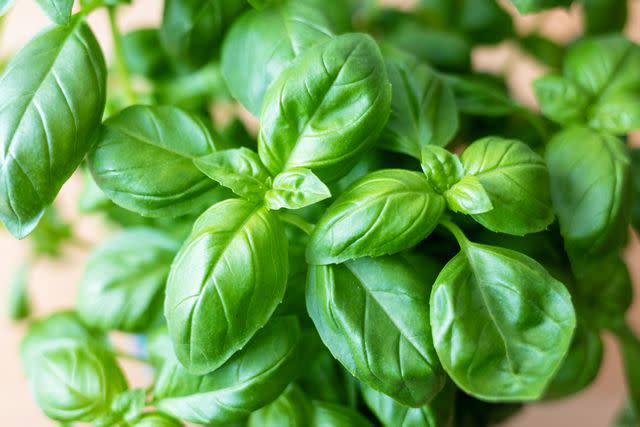
deepblue4you / Getty Images
Predatory wasps love to make their home near basil plants. And, while they may sound scary, predatory wasps will rid your garden of asparagus enemies, including aphids and beetles. That's why basil and asparagus go together like two peas in a pod.
Name: Basil (Ocimum basilicum)
USDA Hardiness Zones: 10
Light: Full sun
Soil: Somewhat rich, well-draining
Dill
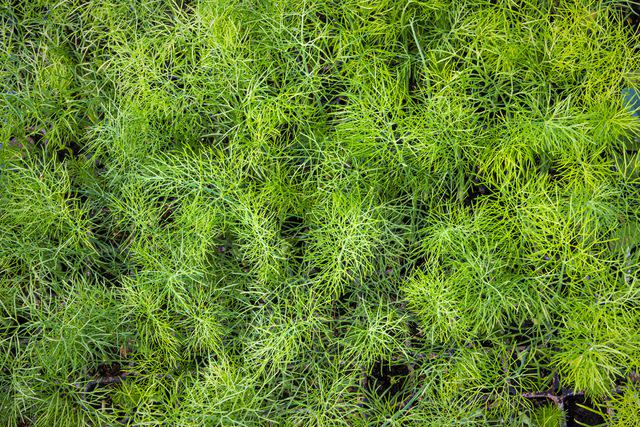
2ndLookGraphics / Getty Images
Dill actually attracts bugs—but they're bugs that devour asparagus-eating bugs. Lacewings and ladybugs both show up when dill plants are present, and they eat aphids, which attack asparagus.
Name: Dill (Anethum graveolens)
USDA Hardiness Zones: 2-11
Light: Full sun
Soil: Rich, well-drained
Marigold
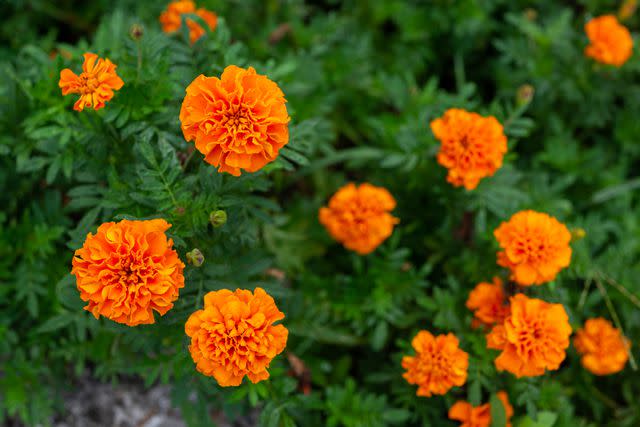
wulingyun / Getty Images
Pops of warm, bright color cover the ground when marigolds are planted near asparagus. But they're more than a pretty addition: these vibrant flowers repel some of asparagus's most ferocious enemies, including aphids, whiteflies, and nematodes.
Name: Marigold (Tagetes spp.)
USDA Hardiness Zones: 2-11
Light: Full sun
Soil: Evenly moist, well-drained
Parsley
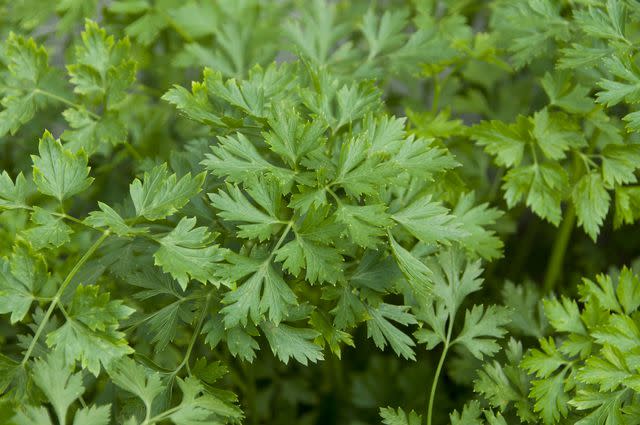
Priscila Zambotto / Getty Images
If you want the best tasting asparagus possible, plant parsley near your plants. This fragrant herb is high in nitrogen, which not only helps the asparagus grow, but it also gives it a more robust, improved flavor.
Name: Parsley (Petroselinum crispum)
USDA Hardiness Zones: 9-11
Light: Full sun, light shade
Soil: Consistently moist but well-drained
Strawberries
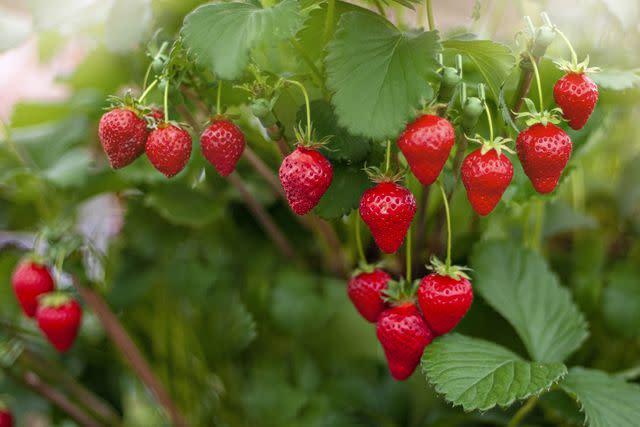
Jacky Parker Photography / Getty Images
Strawberry plants creep along the ground with shallow root systems. As they cover the soil, they provide ground cover that helps asparagus grow. They keep weeds at bay while helping trap moisture in the soil.
Name: Strawberry (Fragaria x ananassa)
USDA Hardiness Zones: 4-9
Light: Full sun
Soil: Loamy, rich, well-drained
Nasturtium
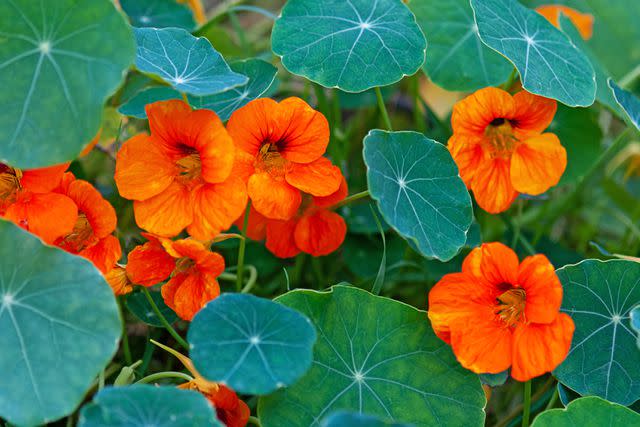
Nadya So / Getty Images
The vibrant color and strong, floral scent of nasturtium are gorgeous in a garden, but that's not the only reason they're an excellent plant to add to your bed of asparagus. Their fragrance repels asparagus beetles.
Name: Nasturtium (Tropaeolum spp.)
USDA Hardiness Zones: 2-11
Light: Full sun
Soil: Acidic, well-drained
Peas
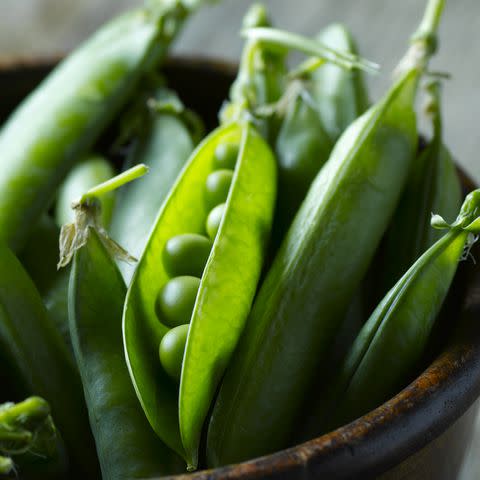
Ben Monk / Getty Images
Peas grow well as a companion plant for asparagus, helping to maintain the moisture in the soil and keep it at the level that asparagus plants prefer for optimal growth.
Name: Pea (Pisum sativum)
USDA Hardiness Zones: 2-11
Light: Full sun
Soil: Moist, neutral
Tip
While peas fall into the legume family and are an excellent companion plant for asparagus, not all legumes are created equal. Beans, also a legume, are a poor companion for asparagus.
Eggplant
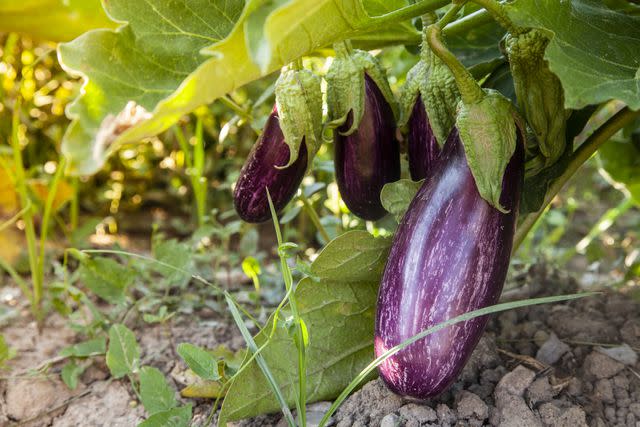
Juana Mari Moya / Getty Images
While asparagus and eggplant may be two favorite summer vegetables, they couldn't be more different in the nutrients that fuel them. That's why they make for excellent companion plants. Additionally, asparagus keeps away the nematodes that will ravage eggplants.
Name: Eggplant (Solanum melongena)
USDA Hardiness Zones: 9-12
Light: Full sun
Soil: Loamy, well-drained
Tomato
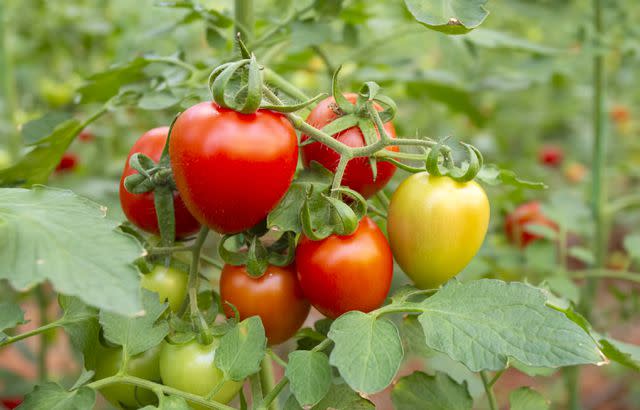
Esin Deniz / Getty Images
Tomatoes and asparagus know exactly how to defend each other from their worst enemies. Tomatoes repel asparagus beetles, while asparagus repel tomato-destroying nematodes.
Name: Tomato (Solanum lycopersicum)
USDA Hardiness Zones: 2-10
Light: Full sun
Soil: Loamy, well-drained
Lettuce
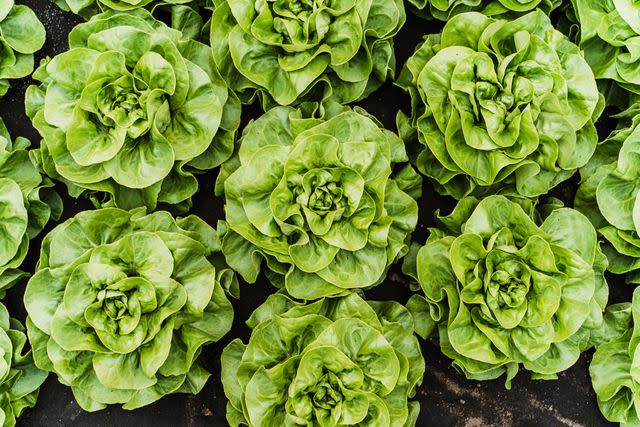
Anna Mardo / Getty Images
Lettuce thrives in cooler temperatures than asparagus, which is exactly why they work as companion plants. Asparagus's tall silhouette will help shade the low-growing lettuce, helping it stay cool on hot days. It will also serve as an excellent ground cover, insulating the soil and preventing moisture from evaporating.
Name: Lettuce (Lactuca sativa)
USDA Hardiness Zones: 2-11
Light: Full sun, partial sun
Soil: Loamy, rich, well-drained
Spinach
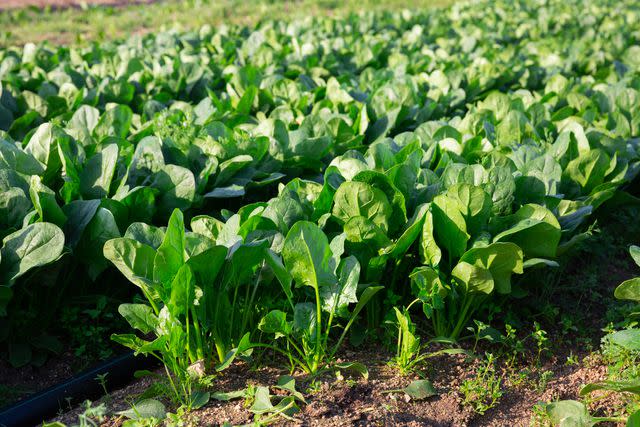
JackF / Getty Images
Spinach plants grow in neat rows and keep to themselves, which makes them an excellent companion plant for asparagus. They also don't compete for nutrients in the soil—it's as if the asparagus won't even know they're there.
Name: Spinach (Spinacia oleracea)
USDA Hardiness Zones: 2-11
Light: Full sun, partial sun
Soil: Loamy, moist, well-drained
Cilantro
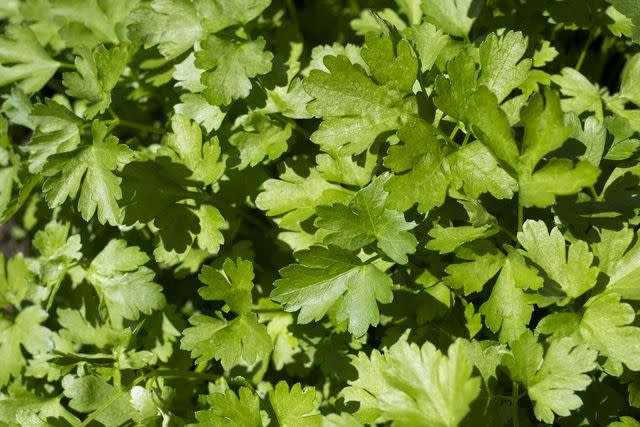
Adrian Crook / Getty Images
Cilantro and asparagus have opposing growth habits, with cilantro having a low profile and shallow roots and asparagus growing taller and deeper into the soil. That makes them the perfect companions for a garden. Plus, cilantro's flowers attract beneficial insects.
Name: Cilantro (Coriandrum sativum)
USDA Hardiness Zones: 2-11
Light: Full sun, partial sun
Soil: Moderately moist, well-drained
What Not to Plant With Asparagus
If you want to grow healthy asparagus in your garden, there are certain plants you should avoid planting near it.
Alliums: Plants like garlic, leeks, and onions can slow the growth of asparagus by competing for the same nutrients in the soil.
Beans: When you plant beans and asparagus in the same garden bed, the beans will stunt the growth of the asparagus.
Potatoes: Both potatoes and asparagus have roots that reach deep into the soil, which means they're competing for space. This leads to inhibited growth for both plants.
Frequently Asked Questions
What can I put on my asparagus bed?
To help your asparagus bed thrive, apply compost manure in late fall or late spring. This can be a 10-10-10 fertilizer, which is 10% nitrogen, 10% phosphorus, and 10% potassium.
Are coffee grounds good for asparagus beds?
Coffee grounds are acidic, which isn't ideal for asparagus, which do best in soil with a pH between 6.5 and 7. However, they can be used within a compost mixture.
Read Next: How to Transplant Asparagus: Tips and Care
Read the original article on The Spruce.

